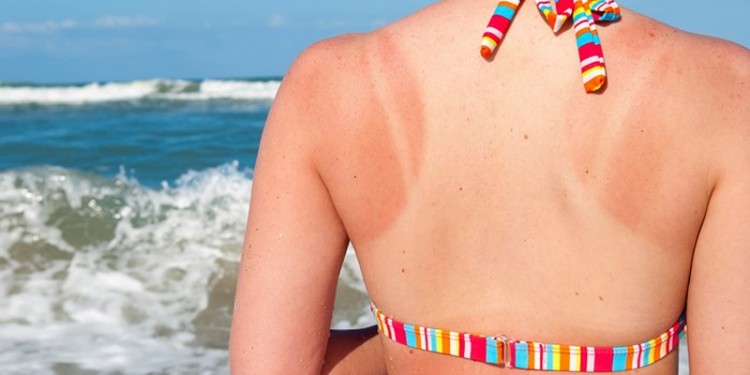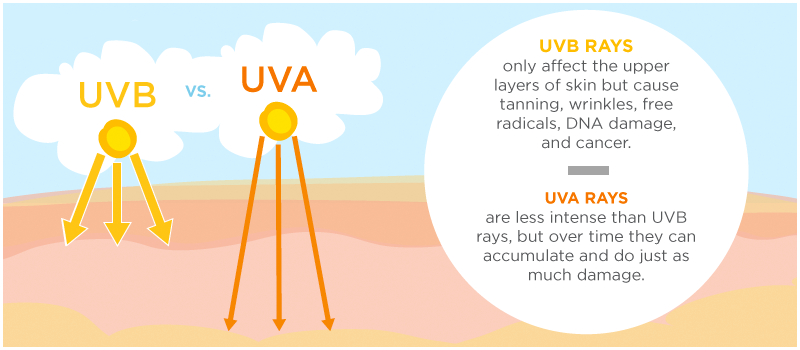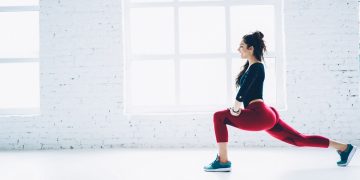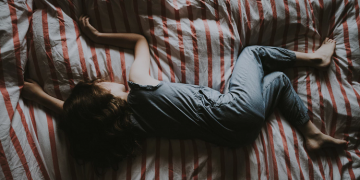The 7 Myths About Tanning (And What You Should Do Instead!)

I have a confession to make. I’m a recovering tanner, and I’m a board certified dermatologist. I’ve been sober for more than a decade, after deciding I wanted to be a dermatologist, but in my late teens and early twenties, I had a fantastic tan that I worked on like it was my job. I even went to the tanning bed. I’m telling you this so you know I understand why you tan. It feels so good to bask in the sun, like a lizard on a rock. You think you look thinner and more attractive with a tan. Most people know that tanning isn’t healthy, but they think it’s a pretty minor infraction. I used to be less aggressive about counseling patients with tans until the 2 weeks I diagnosed 4 women my age (32 at the time) or younger with melanoma. All four had a history of tanning bed use. Two of them were pregnant, and one of the pregnant women had potentially metastatic melanoma. The hardest thing I have ever done professionally was to tell a woman she might have to choose between her life and her baby’s life.
Melanoma is different from many cancers; it kills young people. Major strides have been made in the treatment of advanced melanoma in the last few years, but metastatic melanoma is more often than not a death sentence. Although there is a genetic component that influences the likelihood of developing melanoma, there is a large behavioral component as well. Learning the facts about tanning helps people decide to replace unhealthy behaviors with healthy ones. The following statements are misconceptions I hear daily when I review sun safety with patients.
7 Common Myths & Misconceptions About Tanning
#1 – “Sunburns are bad, but tans are ok.”
Sunburns are definitely a risk factor for skin cancer, but a suntan is not the healthy alternative. Your skin tans in response to injury from ultraviolet light. If you have a tan, you have had damage to your DNA. A 2014 study found that people who went to the tanning bed and had NEVER had a sunburn had a greater risk of melanoma than patients who reported multiple sunburns but no tanning bed use1 (more on this later). Additionally, a study released in January 2016 demonstrated that in women under 30 who were diagnosed with melanoma, ALL of them had a history of tanning bed use.2
#2 – “I wear SPF 100, but I still tan. I just can’t help it.”
SPF is an indicator of how well your sunscreen blocks UVB, which burns you. UVA is what causes pigment darkening (tanning). High SPF sunscreens do not necessarily provide great UVA protection. A physical blocker, like zinc oxide or titanium dioxide, actually puts a mineral shield between you and the sun, so it tends to be better at blocking UVA. Rash guards and sun shirts are very effective in blocking the sun. Think about how you get tan lines… your nylon suit keeps the underlying skin untanned. Rash guards work the same way. Another reason for sunscreen failure is not using enough sunscreen. You need 2 ounces (shot glass) to cover an average-sized adult.
#3 – “Tanning beds are safer than sunlight.”
Tan means radiation damage to your skin, so no. Also, most tanning beds are mainly UVA, unlike sunlight, which contains UVA, UVB, UVC, and visible light. You are getting concentrated UVA from the tanning bed, and we know UVA contributes to developing melanoma. A 2010 study found that using the tanning bed increased the risk of developing melanoma by 74% compared to having never used a tanning bed3. Regular use increased risk by 2-3 times2. Tanning, whether it is from the sun or from a tanning bed, causes skin cancer. And if that’s not enough for you, one study documented bacteria, including staph and intestinal bacteria, in all of the tanning beds tested in ten top-rated New York City tanning salons. So tanning beds are dangerous AND disgusting4. If cancer risk can’t convince you, think about lying naked on a surface about as clean as a public toilet.
#4 – “I know the tanning bed is bad, so I just go to get a ‘base tan’.”
A 2014 study has confirmed that even if the “base tan” prevents sunburn, it affords NO protection against developing melanoma, the most common fatal skin cancer. According to the study, people who used the tanning bed AND had never had sunburn were the most likely of all tanning bed users to have had melanoma1. This study confirms that tanning beds increase your risk of melanoma, regardless of the reason for using them. Rather than going to the tanning bed, use sunscreen and stay in the shade if you want to prevent sunburn. Definitely avoid the tanning bed if you don’t want skin cancer!

#5 – “I know the tanning bed is bad. I just go in the winter because it helps my mood.”
Ultraviolet exposure can increase endorphins, which improve mood and relieve pain5. We think people can become addicted to tanning6. Tanning to lift your spirits is understandable, but it is still unhealthy, just as using drugs and alcohol to improve your mood isn’t healthy. A healthy alternative to tanning is exercise, which also boosts endorphins and can improve appearance. Some patients who tan are self-medicating to treat significant anxiety and depression. I recommend these patients see their primary care doctors to be evaluated for starting medication.
#6 – “I get a tan for the Vitamin D.”
Although UVB irradiation of the skin does promote vitamin D synthesis, there are too many variables that affect Vitamin D production to reliably predict how much sun a person needs to produce a certain Vitamin D level. Oral vitamin D supplements produce a more predictable effect than sun, and there is no risk of skin cancer7. Although increasing Vitamin D is often touted as one of the healthy effects of tanning beds, this is a fallacy. Tanning beds are mostly UVA; they do not produce the right ultraviolet light to stimulate significant Vitamin D production.
#7 – “I look good with a tan.”
This is the most difficult statement to argue with because our culture teaches us that tans are attractive. However even if you do look better with a tan now, you are ensuring you will look worse later than if you hadn’t tanned. Chronic sun exposure leads to brown spots, broken blood vessels, and wrinkles. Ultraviolet light breaks down collagen, the main structural protein in the skin; damaging the collagen not only leads to wrinkles and sagging skin, but it can also worsen cellulite. I have seen patients as young as 23 develop basal cell skin cancer on the face. Having skin cancer leaves you with scars, some of which can be large and unsightly. My young skin cancer patients all have a significant sun exposure history, either from tanning beds or sun bathing/ lifeguarding. So if you think you look better with darker skin, opt for self-tanners. They have come a long way in the last twenty years.
Hopefully I have convinced you that you DO NOT want a tan, and now you need to know how to protect your skin. I recommend only mineral based sunscreens; they provide more reliable sun protection than chemical sunscreens. Chemical sunscreens degrade with exposure to ultraviolet light. You get less than 2 hours before you have to reapply if you use chemical filters. You might do well with reapplying on a beach vacation, but no one reapplies sunscreen on a daily basis, so a physical blocker (mineral sunscreen) is even more important for daily use. Some of the chemical sunscreens cause allergic skin reactions, and paradoxically, some of them can make your skin more sensitive to light8. Rather than SPF, look for zinc oxide and titanium dioxide in the ingredient list of your sunscreen.
I have another confession to make: I hate sunscreen too.
There are a few expensive ones that aren’t chalky or sticky, but unfortunately, good sunscreen is usually somewhat unpleasant. If it’s like you’re not wearing sunscreen, it’s like you’re not wearing sunscreen. So in recent years, I have become a big fan of sun hats, sun shirts, and shade. Not all sun protective clothing is made of nylon. There are many options for zinc oxide treated cotton, which is great if you are going to be outside but are not swimming. I will often put sunscreen on my face and legs at the beach, and then put on a rash guard to cover my arms and trunk. It saves a lot of time to be able to just zip up a shirt. Bonus, you don’t have to find anyone to sunscreen your back! Look for UPF (ultraviolet protection factor) 50.
I am the mother of three little boys 6 and under, and trust me, it is so much easier to put your kid in a total body swim suit than it is to put sunscreen on them, especially when they are small. If the suit covers them from ankles to neck, you only have to get sunscreen on their faces, hands, and feet, and then put hats on them and go! Beach umbrellas and canopies are wonderful because you can enjoy the sun without being directly in it; they allow you to stay out all day, even during peak sun. And the ice in your margarita doesn’t melt as quickly.
To most people, winter is a strange time to be contemplating how to stay safe in the sun. However, as a dermatologist, I want to convince you that safe sun behavior is important all year, and there is never a good time to go to the tanning bed. Whether you spend this winter lying on a sunny beach or just day dreaming of warm summer days, I hope this article will change the way you think about tanning and how you plan to keep your skin healthy and beautiful. Remember: pale is the new tan!
Sources
1.Vogel RI, Ahmed RL, Nelson HH, Berwick M, Weinstock MA, Lazovich D. Exposure to Indoor Tanning Without Burning and Melanoma Risk by Sunburn History. JNCI Journal of the National Cancer Institute. 2014;106(6):dju112. doi:10.1093/jnci/dju112.
2. Lazovich D, Isaksson Vogel R, Weinstock MA, Nelson HH, Ahmed RL, Berwick M. Association Between Indoor Tanning and Melanoma in Younger Men and Women. JAMA Dermatol. Published online January 27, 2016. doi:10.1001/jamadermatol.2015.2938.
3. Lazovich D, Isaksson Vogel R, Berwick M, Weinstock MA, Anderson KE, Warshaw EM. Indoor Tanning and Risk of Melanoma: A Case-Control Study in a Highly Exposed Population. Cancer Epidemiol Biomarkers Prev.June 2010 19:1557-1568; Published OnlineFirst May 26, 2010; doi:10.1158/1055-9965.EPI-09-1249.
4. Russak JE, Rigel DS. Tanning bed hygiene: microbes found on tanning beds present a potential health risk. J Am Acad Dermatol. 2010 Jan;62(1):155-7. doi: 10.1016/j.jaad.2009.05.034.
5. Kaur M, Feldman SR, Liguori A, et al. Indoor tanning relieves pain. Photodermatol Photoimmunol Photomed 2005; 21:278.
6. Feldman SR, Liquori A, Kucenic M, Rapp SR. Fleischer AB, Lang W, Kaur M. Ultraviolet exposure is a reinforcing stimulus in frequent indoor tanners. J Am Acad Dermatology. 2004; 51(1):45-51.
7. Wolpowitz D, Gilchrist BA. The vitamin D questions: How much do you need and how should you get it? J Am Acad Dermatology. 2006:54 (2)301-317.
8. Sambandan, Divya R. et al. Sunscreens: An overview and update. Journal Am Acad Dermatology , Volume 64 , Issue 4 , 748 – 758
Image Source:
https://zonecdn-futurederm.netdna-ssl.com/wp-content/uploads/2015/04/UVA-UVB.png?b1144b
http://www.boldsky.com/img/2012/02/07-hide-sun-tan-070212.jpg



